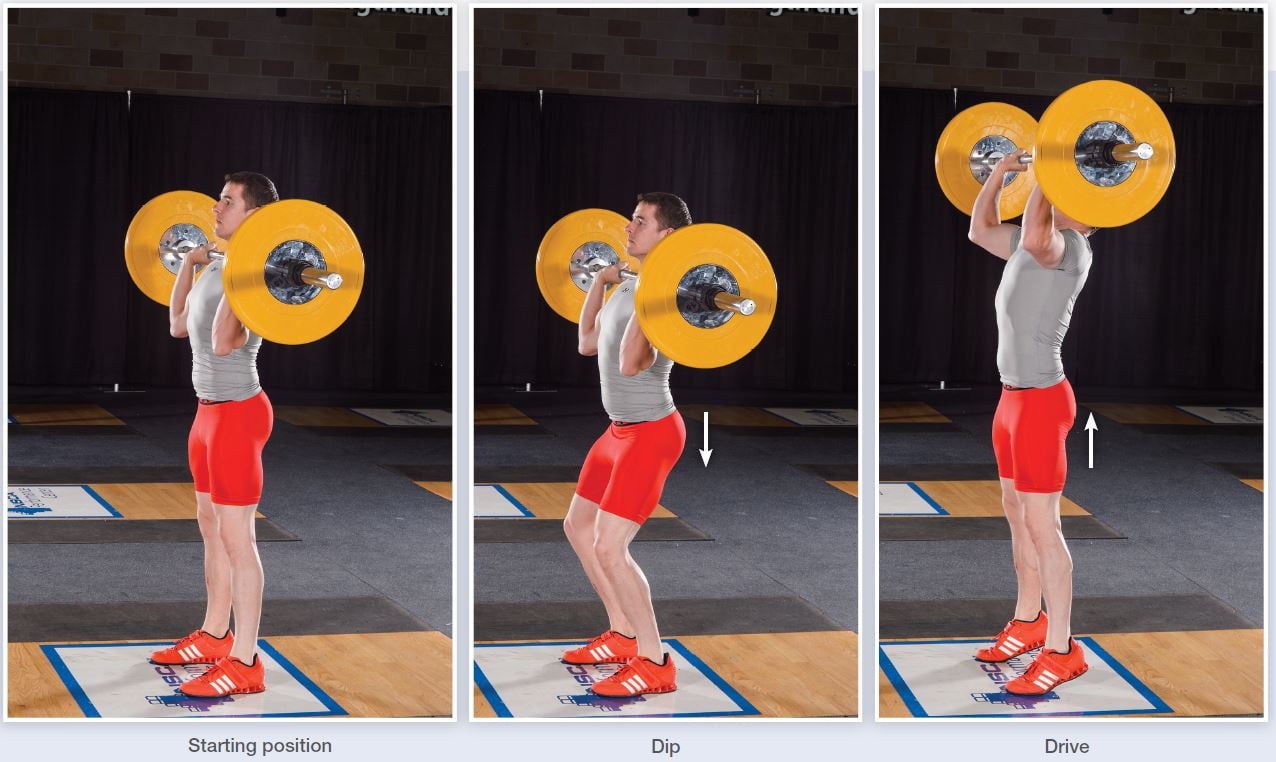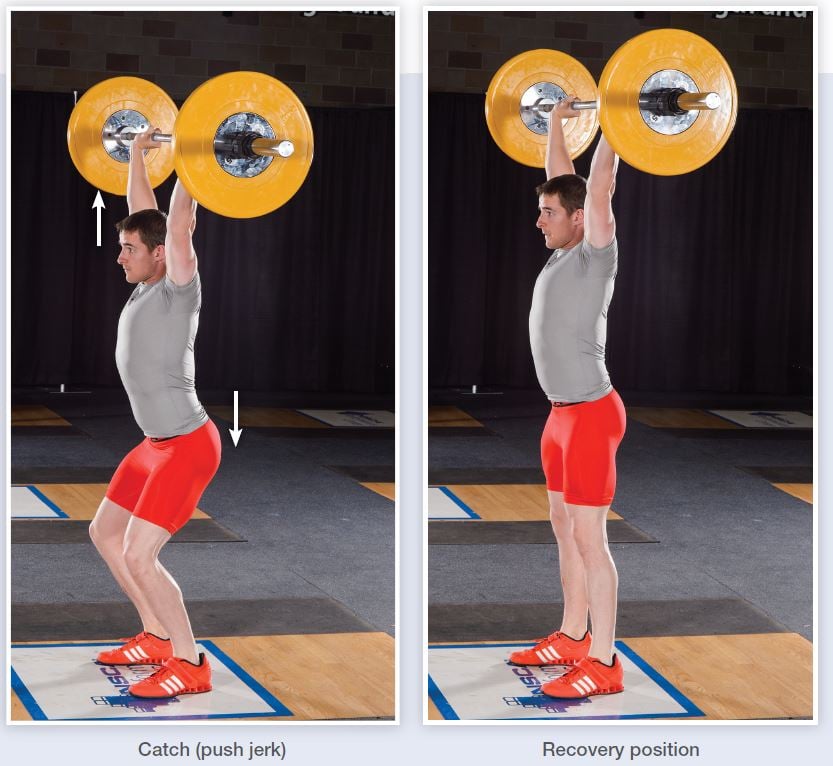Push Jerk
by Exercise Technique Manual for Resistance Training, Third Edition
Kinetic Select
October 2018
This excerpt from Exercise Technique Manual for Resistance Training, Third Edition goes over the technique and execution in each phase of the push jerk.
Push Jerk
This exercise consists of quickly and forcefully flexing and then extending the hips and knees to drive the bar upward from the shoulders while pushing the body underneath. The bar finishes in an overhead position. The push jerk exercise requires a rapid hip and knee extension to accelerate the bar off the shoulders. The push jerk also involves a forceful hip and knee thrust so that the bar is actually thrown (or jerked) upward, then caught with extended elbows in the overhead position with the hips and knees slightly flexed.
Starting Position
- Use the power clean or hang power clean exercise to lift the bar from the floor to the shoulders or remove the bar from a shoulder-height position on a power or squat rack.
- Stand erect with the feet hip- to shoulder-width apart and the toes pointed forward or slightly outward.
- Once the bar is positioned at the front of the shoulders, check to be sure that the grip on the bar is even, pronated, closed, and slightly wider than shoulder-width. The grip should remain relaxed on the bar.
- The elbows should be underneath or slightly ahead of the bar.
- All repetitions begin from this position.
- While keeping the torso erect and head in line with the spine, flex the hips and knees at a slow to moderate speed to move the bar in a straight downward path. Do not change the position of the arms.
- The hips should not move backward during the dip. Instead, they should remain directly underneath the shoulders.
- The downward movement is not a full squat, but rather a dip to a depth not to exceed a quarter squat or the catch position of the power clean. Another guideline is a depth that does not exceed 10% of the lifter’s body height.
Dip (Active Preparation for the Drive Phase)
Upward Movement (Drive Phase)
- Immediately upon reaching the lowest position of the dip, reverse the movement by rapidly extending the hips, knees, ankles, and then the elbows to move the bar overhead.
- Initially, the bar needs to be held in place on the shoulders to benefit maximally from the upward momentum produced by the triple extension. Note that the feet may come off the floor as the bar leaves the shoulders.
- The neck must slightly hyperextend to allow the bar to pass by the chin (or else the bar will hit the face).

Catch
The drive phase of the push jerk allows the bar to be caught over the head with the elbows fully extended and the hips and knees slightly flexed.
- As the bar is caught, the hips and knees should be flexed to about a quarter-squat position. The goal is to catch the bar at the same moment the bar reaches maximal height and the feet come back into contact with the floor.
- The torso should be erect, with the head in line with the spine directly under the bar; the eyes are focused forward.
- Balance the body’s weight over the middle of the feet.
- After gaining control and balance, stand up by extending the hips and knees to a fully erect position with the feet flat on the floor.
- Keep the elbows locked while the bar is stabilized overhead.
Recovery

Downward Movement
- At the completion of the repetition, lower the bar by gradually reducing the muscular tension of the arms to allow a controlled descent of the bar to the shoulders. The hips and knees are simultaneously flexed to cushion the impact of the bar on the shoulders.
- If additional repetitions are to be performed, stand fully erect first and then follow the guidelines described for the dip phase. The bar does not return to the floor or rack between repetitions.
- At the completion of the set, first lower the bar from the shoulders to the thighs, then to the floor (similar to the power clean exercise). The bar can also be placed back on the power or squat rack.
Exercise Technique Manual for Resistance Training, Third Edition With Online Video, explains 70 resistance training exercises with step-by-step instructions, photos, and online video demonstrations. The book is available in bookstores everywhere, as well as online at the NSCA Store.
- Privacy Policy
- Your Privacy Choices
- Terms of Use
- Retraction and Correction Policy
- © 2025 National Strength and Conditioning Association